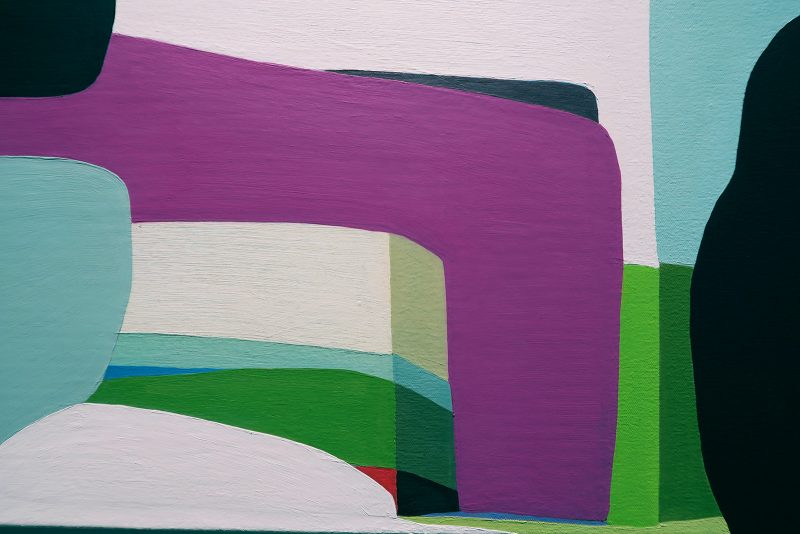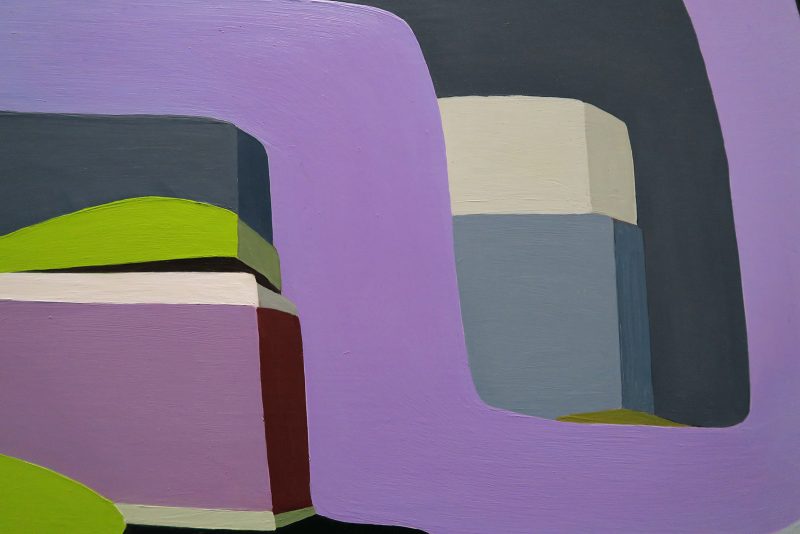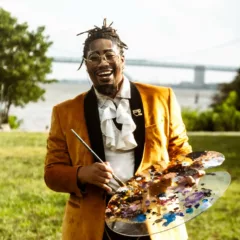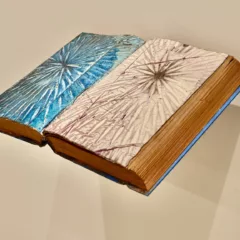
Shifting ground
The sumptuous new oil paintings by Louise Belcourt, currently on view at Locks Gallery, are the product of an ongoing dialog between the landscape (and the built structures that populate it), the painter, and the paint. Belcourt splits her time between her two studios, one in Williamsburg, Brooklyn, with sweeping views of the Manhattan skyline, and the other in the countryside near Quebec, Canada, an isolated rural environment, often transporting the paintings with her from the city to the country and back again, but the specifics of these two places are not readily apparent in the work.
Blocky shapes pile upwards from the horizon line at the bottom edge of each canvas and coalesce into abstracted vistas. Belcourt utilizes an organic approach to perspective and sophisticated shifts in color to render depth, space, and atmospheric light. The liminal spaces between the tightly packed fields of flatly applied color function as alleyways from foreground to middleground. However, as I lingered in the gallery, I recognized the images as completely imagined places assembled using the language of landscape painting, rather than relating to the real world around us.

Massing
In her inaugural show at Locks, the group of 14 easel-size paintings employs a finite number of beautifully chunky forms, loosely representative of architectural structures and landmasses. By arranging them in various combinations, Belcourt examines the shapes’ unique personalities in relationship to one another.
In the four paintings from the “Lamb’s Ear” series, a long lavender arm winds like a river behind, around, and through the other objects, gathering them in its embrace. In “Mound #18,” “Mound #25,” and “Lamb’s Ear #5,” large black shapes pour down from the top edge of the canvas, trapping the figures below under their weight. Energetic red ovoid forms leap skywards in “Lamb’s Ear #1” and “Lamb’s Ear #2,” yet the subtly warmer form in the latter painting is tucked back into place by an aforementioned lavender arm.

“Cliff Flower #7,” the largest painting in the show, introduces two flower forms in ocher green and cloud blue, and soft pink petals that peek out from behind the creamy white and velvety blue-grey boxes found in many of the other canvases in the show.
Figure and ground
Through a slow reveal of subtle color relationships, sophisticated tonal shifts, contrasting glossy and flat surfaces, and carefully articulated edges, Belcourt masterfully explores the figure ground relationship in her paintings. This formalist play is not a new device in painting, but her commitment to this approach in an age when appropriation is ubiquitous is unique. Also beguiling is the fact that there is zero reference to–or even evidence of–influence by digital media. The only nod to popular culture may be Belcourt’s color choices, which have veered away from the palette of primaries she’s worked with in the past, to more designer neutrals and fresh greens with pops of deep black, youthful purple and pink, and bright orange-red.
The seriousness with which Belcourt approaches her “work,” the work of the painter as visual mediator, is what makes these painting so powerful. These paintings are meditations on the role of the purist painter in our increasingly digital culture, and I found them a salve for my media saturated soul.
On view at Locks Gallery, 600 Washington Square South, through February 4, 2017. Open Tuesday–Saturday; 10am–6pm.
There will be a reception for the artist and walk-through discussion with Clint Jukkala, Dean of the School of Fine Arts at the Pennsylvania Academy of the Fine Arts (PAFA), on Friday, January 20, from 5:30–7:30pm.









